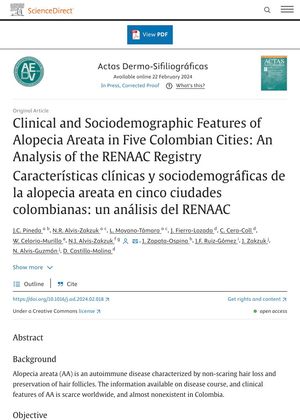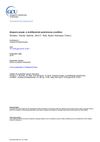Clinical And Sociodemographic Features Of Alopecia Areata In Five Colombian Cities: An Analysis Of The Renaac Registry
February 2024
in “
Actas dermo-sifiliográficas/Actas dermo-sifiliográficas
”

TLDR Most alopecia areata patients in the study were women, aged 15-49, with patchy hair loss and often had other health conditions.
This study analyzed 562 patients with alopecia areata (AA) from five Colombian cities using the RENAAC registry. The majority were women (59.4%), aged 15-49 years (63.9%), with a mean disease duration of 1.7 years. The most common presentation was multiple plaques (53.2%), with patchy AA being the predominant subtype (71.4%). Common comorbidities included dermatological (29.5%), endocrinological (18.3%), and psychiatric (8.9%) conditions. Treatments frequently used were steroid injections (76.4%), 5% topical minoxidil (46.4%), and high-potency corticosteroids (42.5%). Men had an earlier AA onset, and pediatric cases were rare. The study emphasized the need for comprehensive care protocols and noted limitations due to its retrospective nature and reliance on health records.

